Autophagy
Autophagy is a catabolic process which degrades and recycles long-lived proteins and cytoplasmic organelles through lysosome. It plays an important role in growth regulation and maintenance of homeostasis.
Produkte für Autophagy
- Bestell-Nr. Artikelname Informationen
-
GC30761
α-Hydroxylinoleic acid
α-HydroxylinolsÄure (α-HydroxylinolsÄure) induziert die Stress-vermittelte Autophagie des endoplasmatischen Retikulums (ER).

-
GC46008
(±)-Thalidomide-d4
N-Phthaloylglutamimide-d4
(±)-Thalidomid-d4 ist ein mit Deuterium bezeichnetes Thalidomid.
-
GC34960
(+)-Talarozole
(+)-Talarozol ist ein potenter Inhibitor des RetinsÄurestoffwechsels, extrahiert aus dem Patent WO 1997049704 A1.
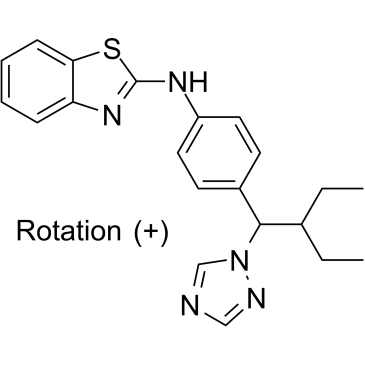
-
GC10603
(-)-epicatechin gallate
ECG
(-)-Epicatechingallat (Epicatechingallat) hemmt Cyclooxygenase-1 (COX-1) mit einem IC50 von 7,5 μM.
-
GC17242
(-)-epigallocatechin
(-)EGC, epi-Gallocatechin, NSC 674039
(-)-Epigallocatechin (Epigallocatechin) ist das am hÄufigsten vorkommende Flavonoid in grÜnem Tee, kann an ungefaltete native Polypeptide binden und die Umwandlung in Amyloidfibrillen verhindern.
-
GC14049
(-)-Epigallocatechin gallate (EGCG)
EGCG
Ein Phenol mit vielfältigen biologischen Aktivitäten.

-
GC31386
(-)-PX20606 trans isomer ((-)-PX-102 trans isomer)
(-)-PX20606 trans-Isomer ((-)-PX-102 trans-Isomer) ist ein FXR-Agonist mit EC50-Werten von 18 und 29 nM fÜr FXR im FRET- bzw. M1H-Assay.
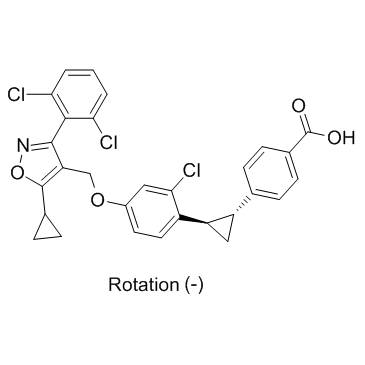
-
GC60395
(3S,5R)-Fluvastatin D6
(3S,5R)-XU 62-320 free acid D6
(3S,5R)-Fluvastatin D6 ist das mit Deuterium markierte (3S,5R)-Fluvastatin-Natrium.
-
GC49189
(E/Z)-4-hydroxy Tamoxifen-d5
Afimoxifene-d5, 4-OHT-d5
An internal standard for the quantification of (E/Z)-4-hydroxy tamoxifen
-
GC34096
(R)-(-)-Gossypol acetic acid (AT-101 (acetic acid))
(R)-(-)-Gossypol-EssigsÄure (AT-101 (EssigsÄure)) (AT-101 (EssigsÄure)) ist das linksdrehende Isomer des Naturprodukts Gossypol. Es wird bestimmt, dass AT-101 an Bcl-2-, Mcl-1- und Bcl-xL-Proteine mit Kis von 260&7#177;30 nM, 170&7#177;10 nM bzw. 480&7#177;40 nM bindet.

-
GC31665
(R)-BPO-27
(R)-BPO-27, das R-Enantiomer von BPO-27, ist ein potenter, oral aktiver und ATP-kompetitiver CFTR-Inhibitor mit einem IC50 von 4 nM.

-
GC62528
(Rac)-Hesperetin
(Rac)-Hesperetin ist das Racemat von Hesperetin.

-
GC73075
(rel)-ML-SI3
trans-ML-SI3
(rel)-ML-SI3 ist einer der Wirkstoffe von ML-SI3, eine weitere Komponente ist cis-ML-SI3, die drei Isoformen von TRPML anvisiert.
-
GC13136
(S)-Crizotinib
(S)-Crizotinib ist ein potenter und selektiver MTH1 (mutT-Homolog)-Inhibitor mit einem IC50 von 330 nM. (S)-Crizotinib stÖrt die Nukleotidpool-HomÖostase durch MTH1-Hemmung, induziert eine Zunahme von DNA-EinzelstrangbrÜchen, aktiviert die DNA-Reparatur in menschlichen Kolonkarzinomzellen und unterdrÜckt effektiv das Tumorwachstum in Tiermodellen.

-
GC14820
(S)-Naproxen
CG 3117, (S)-Naproxen
(S)-Naproxen ist ein COX-1- und COX-2-Inhibitor mit IC50-Werten von 8,72 bzw. 5,15 &7#956;M im Zellassay.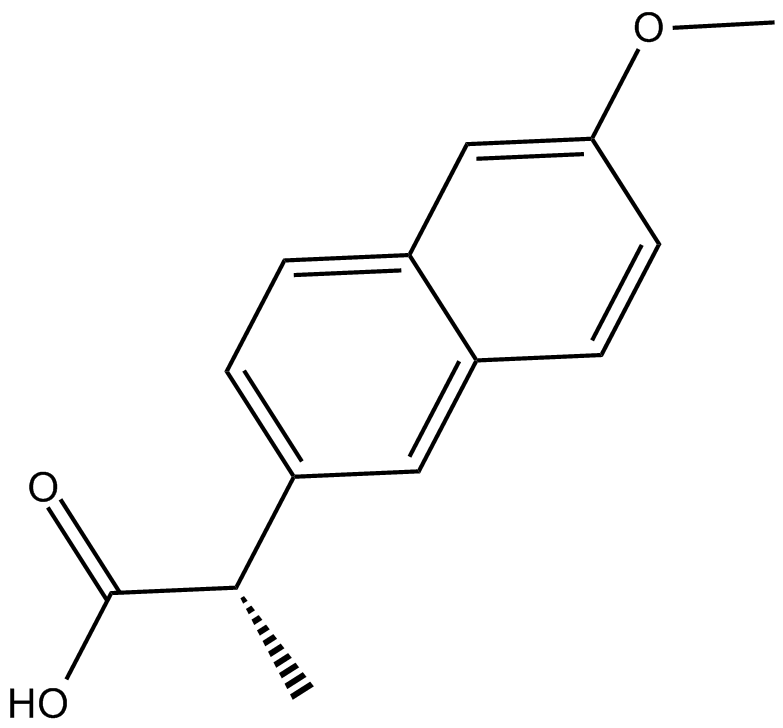
-
GC15015
(±)-Bay K 8644
SQ 28,873
(±)-Bay K 8644 ((±)-(±)-Bay K 8644) ist ein Racemat, das aus zwei Isomeren (R)-(+)-Bay-K-8644 und (S)-(-)-Bay besteht -K-8644.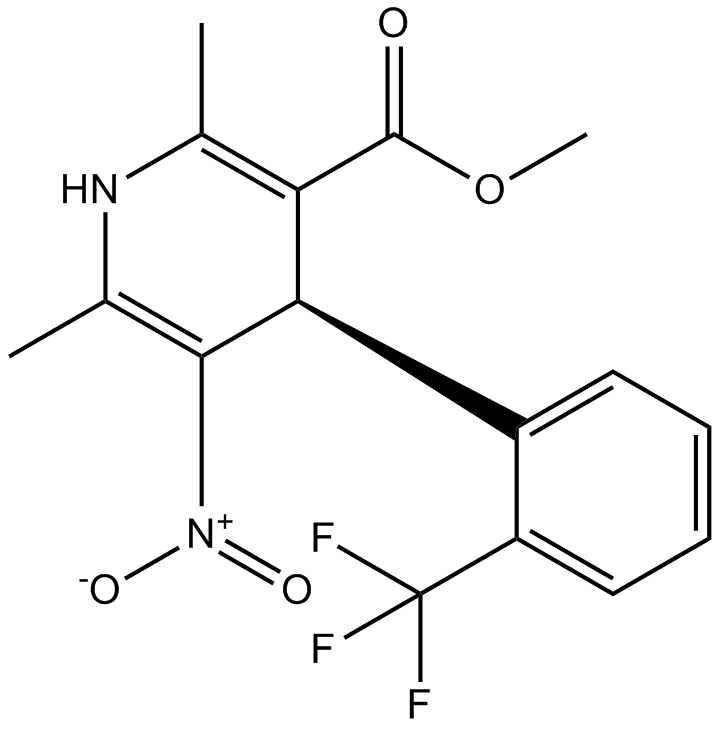
-
GC35068
1-Monomyristin
MG(14:0/0:0/0:0), 1-Monomyristin
1-Monomyristin, extrahiert aus Serenoa repens, hemmt die Hydrolyse von 2-Oleoylglycerol (IC50=32 μM) und die AktivitÄt der FettsÄureamidhydrolase (FAAH) (IC50=18 μM).
-
GC17295
10058-F4
10058-F4 ist ein c-Myc-Inhibitor, der die c-Myc-Max-Dimerisierung und Transaktivierung der c-Myc-Zielgenexpression verhindert.

-
GC14918
10074-G5
10074-G5 ist ein Inhibitor der c-Myc-Max-Dimerisierung mit einem IC50 von 146 μM.
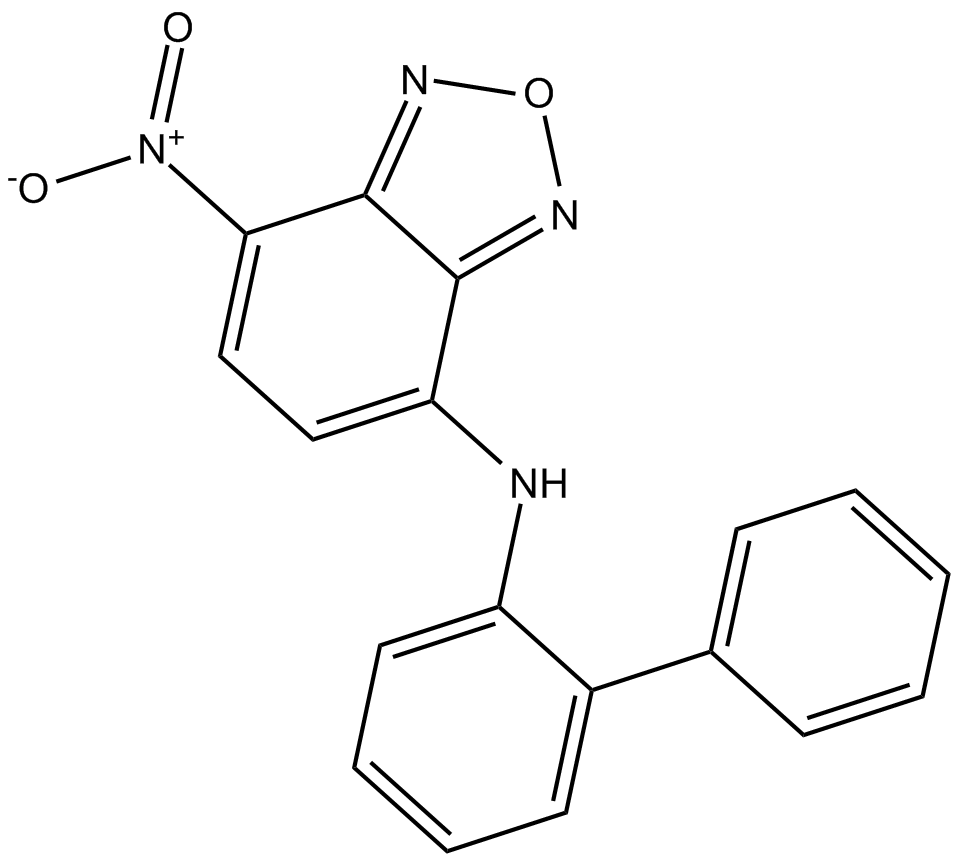
-
GC11720
17-AAG (KOS953)
BMS 722782, CP 127374, KOS 953, NSC 330507, Tanespimycin
17-AAG(Geldanamycin), a natural benzoquinone ansamycin antibiotic, is the first established inhibitor of Hsp90.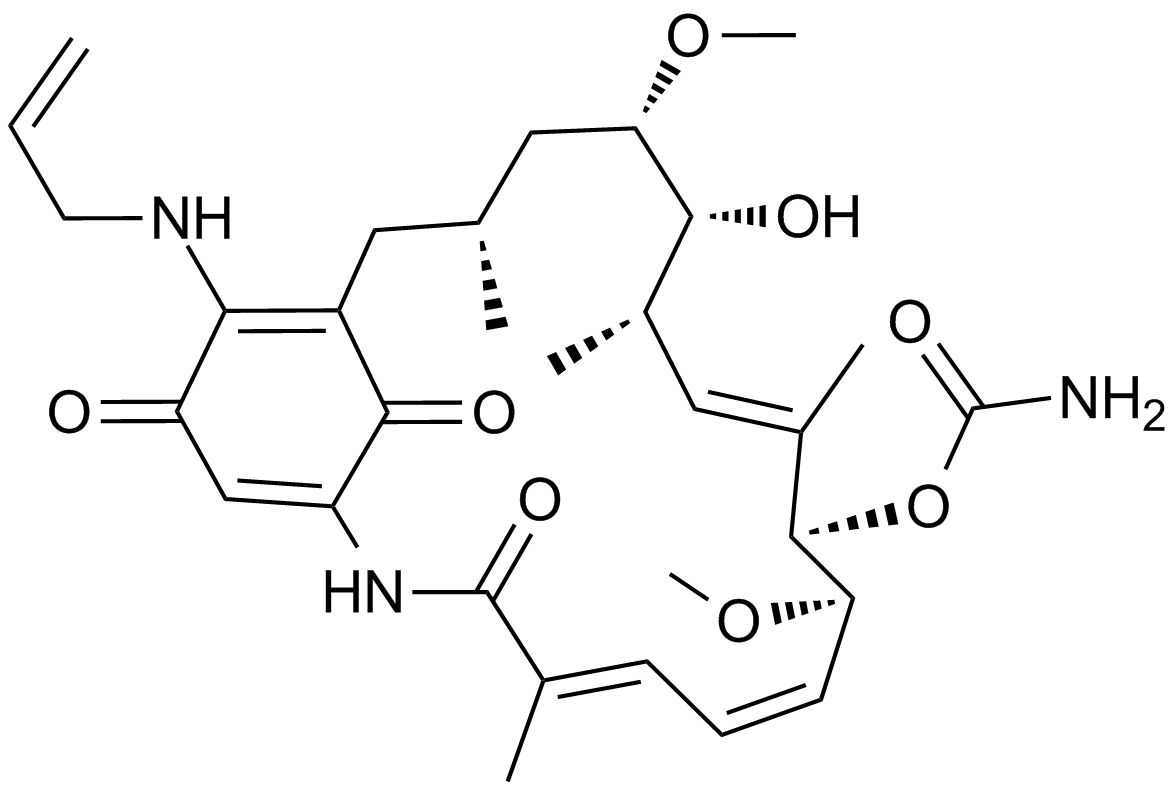
-
GC40947
2,3-Dimethoxy-5-methyl-p-benzoquinone
Coenzyme Q0, CoQ0
2,3-Dimethoxy-5-methyl-p-benzochinon (CoQ0) ist eine potente, oral aktive Ubichinonverbindung, die aus Antrodia cinnamomea gewonnen werden kann.
-
GC46057
2,5-Dihydroxycinnamic Acid phenethyl ester
An inhibitor of 5-LO

-
GC15084
2-Methoxyestradiol (2-MeOE2)
2Hydroxyestradiol 2methyl ether, 2ME2, NSC 659853, Panzem
2-Methoxyestradiol (2-MeOE2/2-Me) is an HIF-1α inhibitor.
-
GC30011
20-Deoxyingenol
20-Deoxyingenol, ein Diterpen, wird aus den Wurzeln von Euphorbia kansui isoliert.
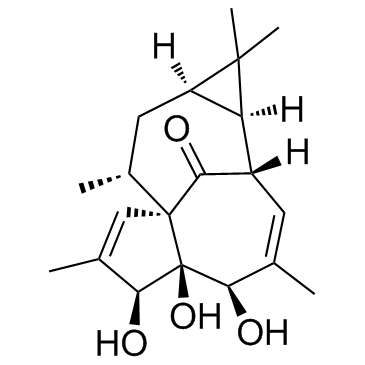
-
GC35112
3'-Hydroxypterostilbene
3'-Hydroxypterostilben ist ein Pterostilben-Analogon. 3'-Hydroxypterostilben hemmt das Wachstum von COLO 205-, HCT-116- und HT-29-Zellen mit IC50-Werten von 9,0, 40,2 bzw. 70,9 μM. 3'-Hydroxypterostilben reguliert die PI3K/Akt- und MAPK-Signalwege signifikant herunter und hemmt wirksam das Wachstum menschlicher Dickdarmkrebszellen, indem es Apoptose und Autophagie induziert. 3'-Hydroxypterostilben kann fÜr die Krebsforschung verwendet werden.
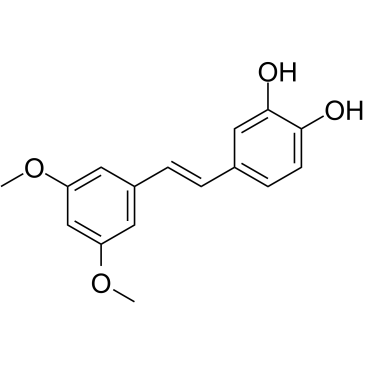
-
GC12791
3,3'-Diindolylmethane
DIM
A phytochemical with antiradiation and chemopreventative effects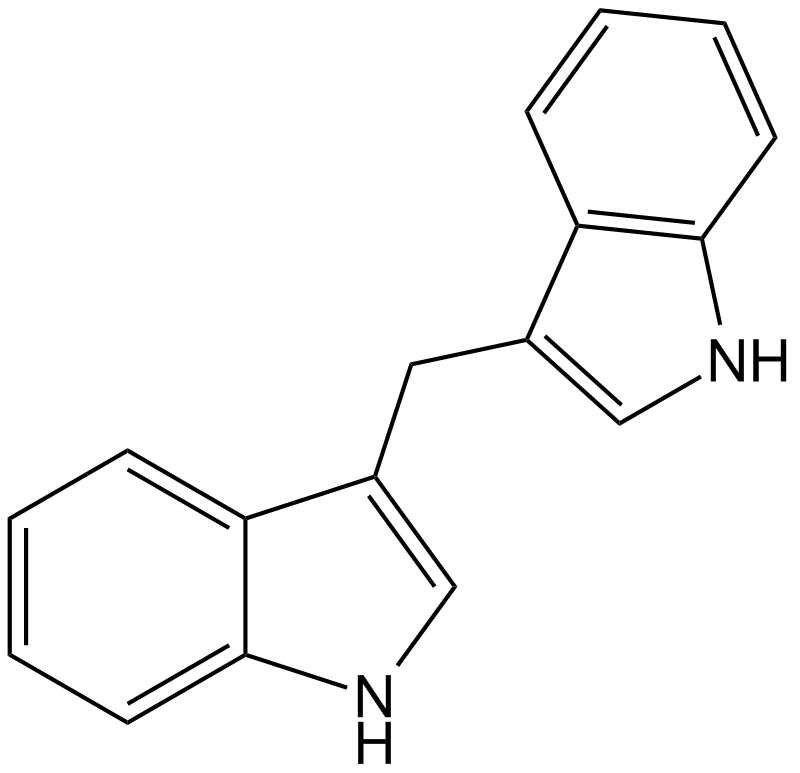
-
GC74663
3,4-Dimethoxychalcone
3,4-Dimethoxychalcone ist eine Caloric restriction mimetics (CRMs).

-
GC10710
3-Methyladenine
3-MA
3-Methyladenin ist ein klassischer Autophagie-Inhibitor.
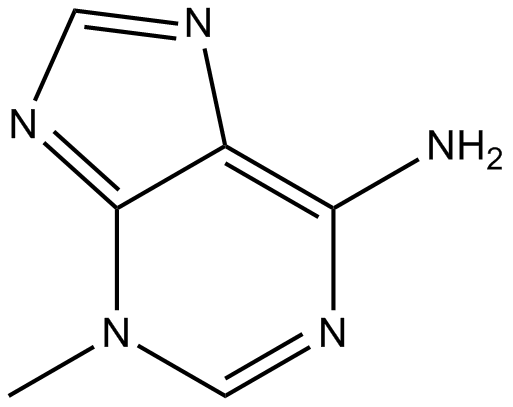
-
GC32767
3BDO
3-Benzyl-5-((2-nitrophenoxy)methyl)dihydrofuran-2(3H)-one
3BDO ist ein neuer mTOR-Aktivator, der auch die Autophagie hemmen kann.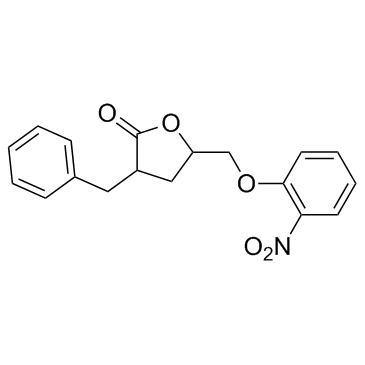
-
GC39658
4,4'-Dimethoxychalcone
4,4'-Dimethoxychalcon wirkt als natÜrlicher Autophagie-Induktor mit Anti-Aging-Eigenschaften.

-
GC42414
4-hydroxy Tolbutamide
4-Hydroxy-Tolbutamid (Hydroxytolbutamid) ist ein Metabolit von Tolbutamid.

-
GC35132
4-Hydroxylonchocarpin
4-Hydroxylonchocarpin ist eine Chalconverbindung aus einem Extrakt von Psoralea corylifolia.

-
GC70208
4-Hydroxytolbutamide-d9
4-Hydroxytolbutamide-d9 ist das Deuterium markierte 4-Hydroxytolbutamid.
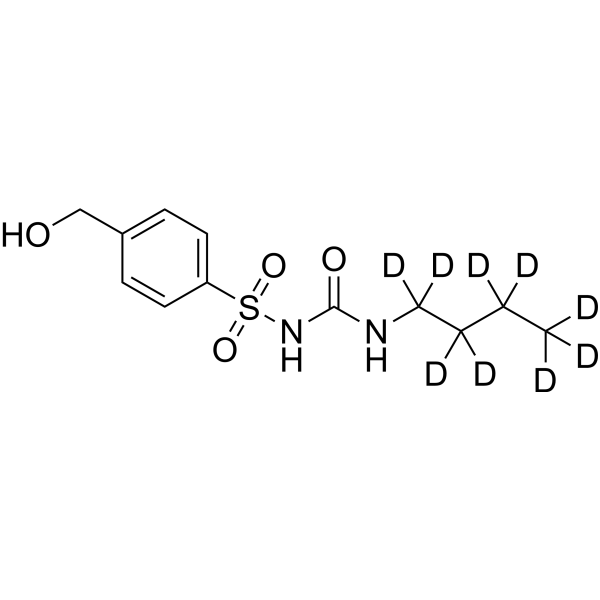
-
GC13104
4E1RCat
eIF4E/eIF4G Interaction Inhibitor II
4E1RCat ist ein Inhibitor der Cap-abhÄngigen Translation und hemmt die eIF4E:eIF4GI-Wechselwirkung mit einem IC50 an von ~4 μM.
-
GC30785
4E2RCat
4E2RCat ist ein Inhibitor der eIF4E-eIF4G-Interaktion mit einer IC50 von 13,5 μM.

-
GC10468
4EGI-1
eIF4E/eIF4G Interaction Inhibitor
4EGI-1 ist ein Inhibitor der eIF4E/eIF4G-Interaktion mit einer Kd von 25 μM gegen die eIF4E-Bindung.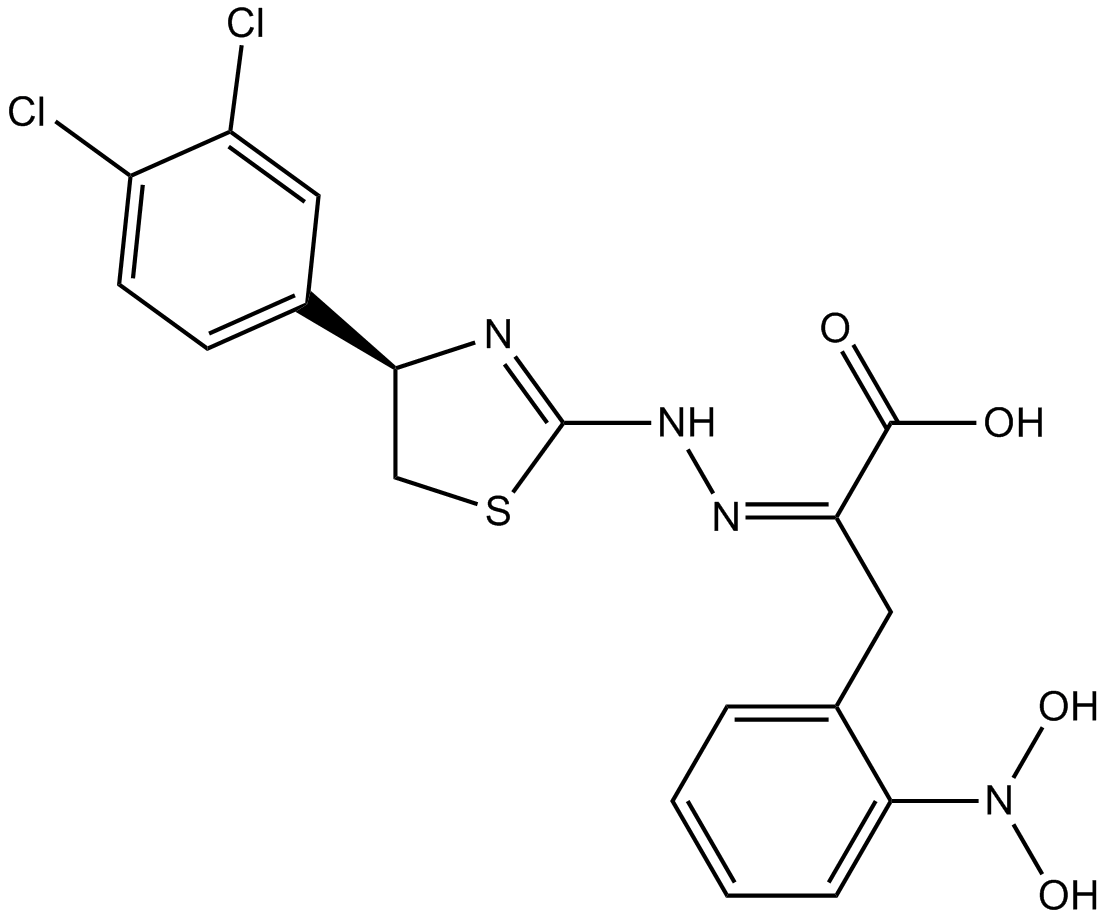
-
GC45356
5-Aminolevulinic Acid (hydrochloride)

-
GC10946
5-Azacytidine
Antibiotic U 18496, 5AzaC, Ladakamycin, Mylosar, NSC 102816, NSC 103627, U 18496, WR 183027
5-Azacytidine (also known as 5-AzaC), a compound belonging to a class of cytosine analogues, is a DNA methyl transferase (DNMT) inhibitor that exerts potent cytotoxicity against multiple myeloma (MM) cells, including MM.1S, MM.1R, RPMI-8266, RPMI-LR5, RPMI-Dox40 and Patient-derived MM, with the half maximal inhibition concentration IC50 values of 1.5 μmol/L, 0.7 μmol/L, 1.1 μmol/L, 2.5 μmol/L, 3.2 μmol/L and 1.5 μmol/L respectively.
-
GN10241
5-Methoxypsoralen
5-Methoxypsoralen, 5-MOP, Heraclin, NSC 95437

-
GC72854
6-CEPN
6-CEPN ist ein RAS-Hemmer.

-
GC16267
6-Hydroxydopamine hydrobromide
6-hydroxy Dopamine, Oxidopamine, 2,4,5-Trihydroxyphenethylamine
6-Hydroxydopamine hydrobromide ist ein strukturelles Analogon der Katecholamine Dopamin und Noradrenalin und übt seine toxischen Wirkungen auf katecholaminerge Neuronen aus.
-
GN10228
6-Shogaol
Ein bioaktiver Bestandteil von Ingwer
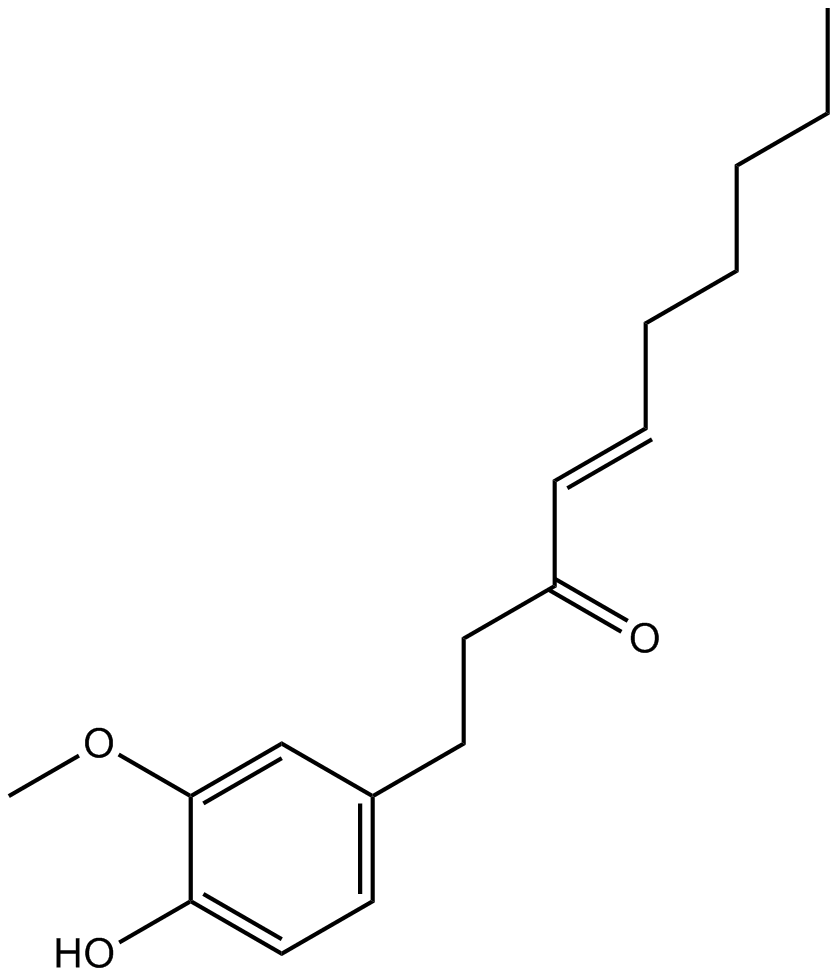
-
GC12739
A 484954
A 484954 ist ein hochselektiver Hemmer des eukaryotischen Elongationsfaktors 2 (eEF2) mit einem IC50-Wert von 280 nM.

-
GC17710
A-317491
A 317491;A317491
A P2X3 and P2X2/3 receptor antagonist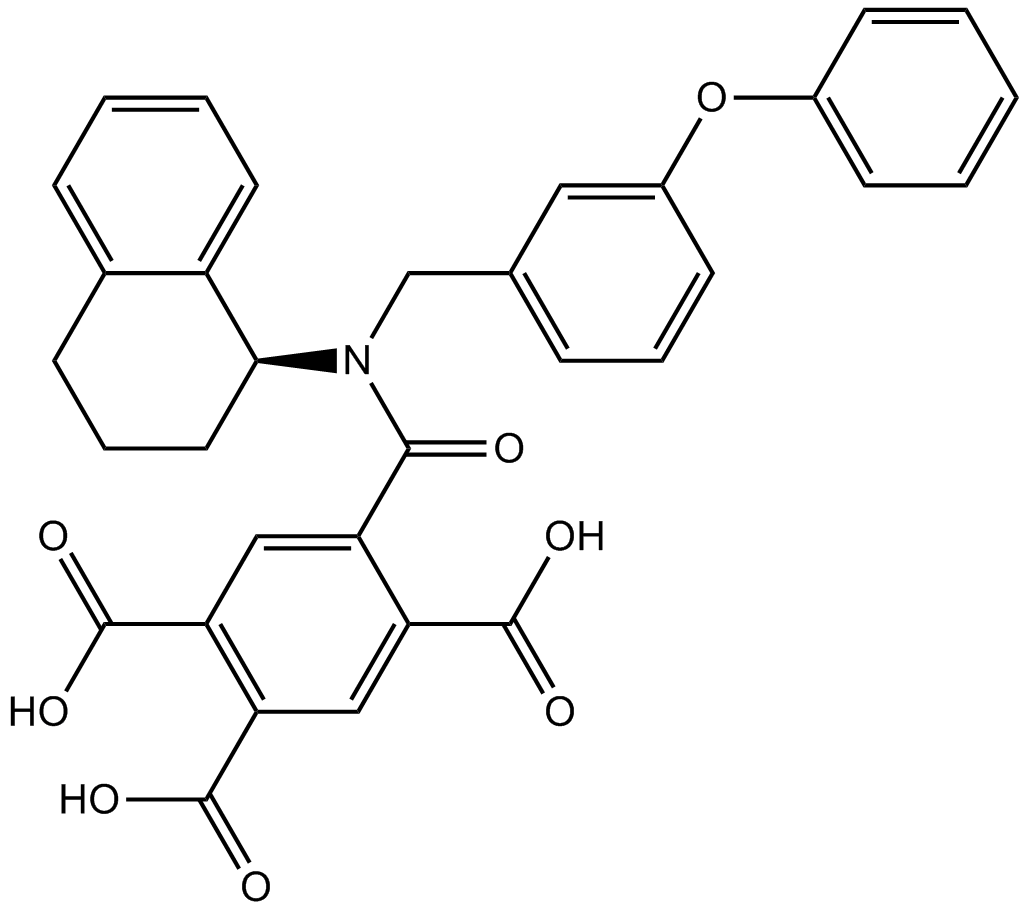
-
GC35211
A-317491 sodium salt hydrate
A-317491 Natriumsalzhydrat ist ein potenter, selektiver und Nicht-Nukleotid-Antagonist von P2X3- und P2X2/3-Rezeptoren mit Kis von 22, 22, 9 und 92 nM fÜr hP2X3, rP2X3, hP2X2/3 und rP2X2/3, beziehungsweise.

-
GC15014
A-867744
A positive allosteric modulator of α7 nAChRs

-
GC11200
A23187
Calcimycin
A23187 (A-23187) ist ein Antibiotikum und ein einzigartiger Divalent-Kationen-Ionophor (wie Calcium und Magnesium).
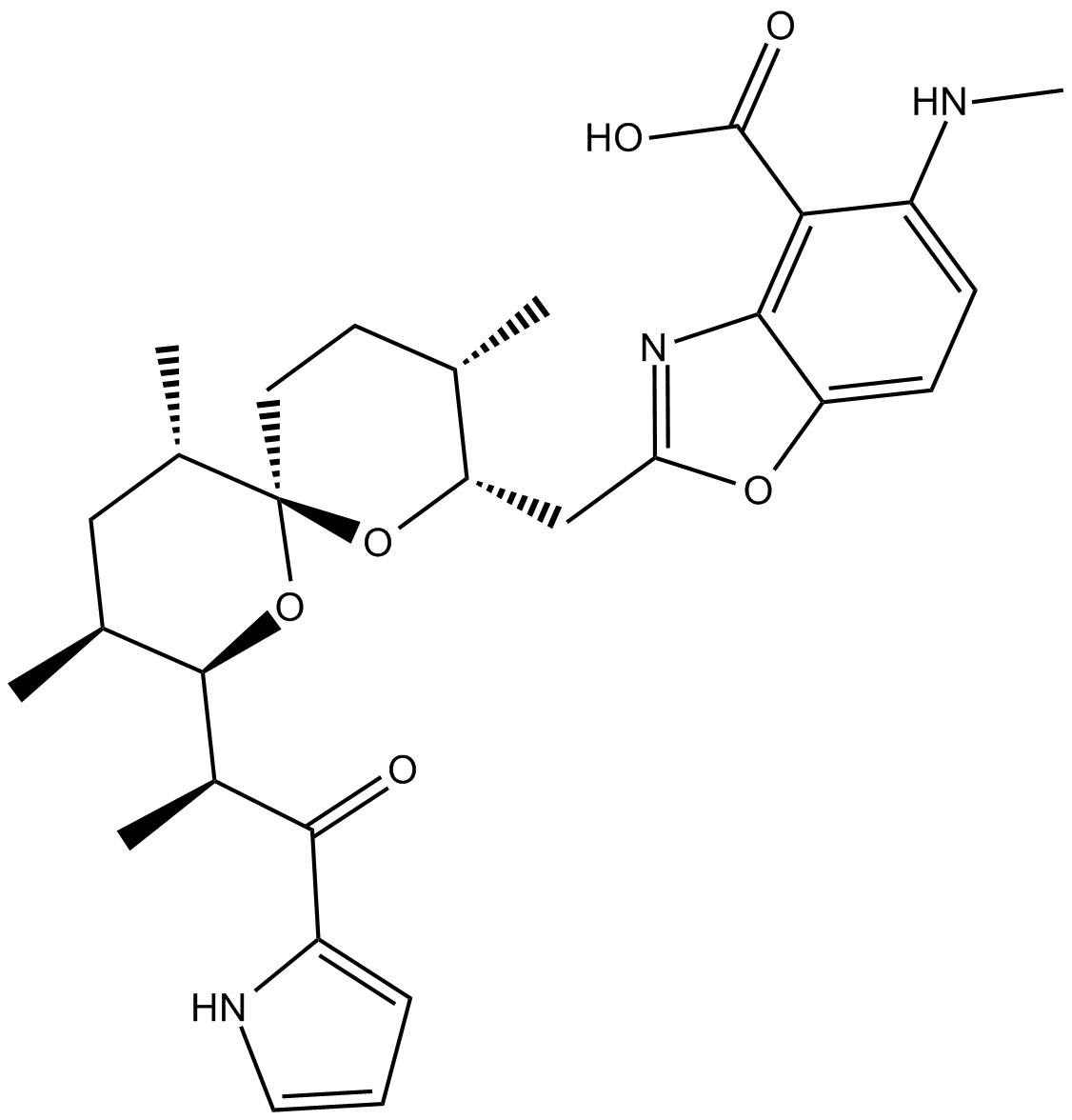
-
GC42677
ABO (hydrochloride)
ABO is a modulator of annexin A7.

-
GC14069
ABT-199
GDC 0199, Venetoclax
Ein Bcl-2-Inhibitor
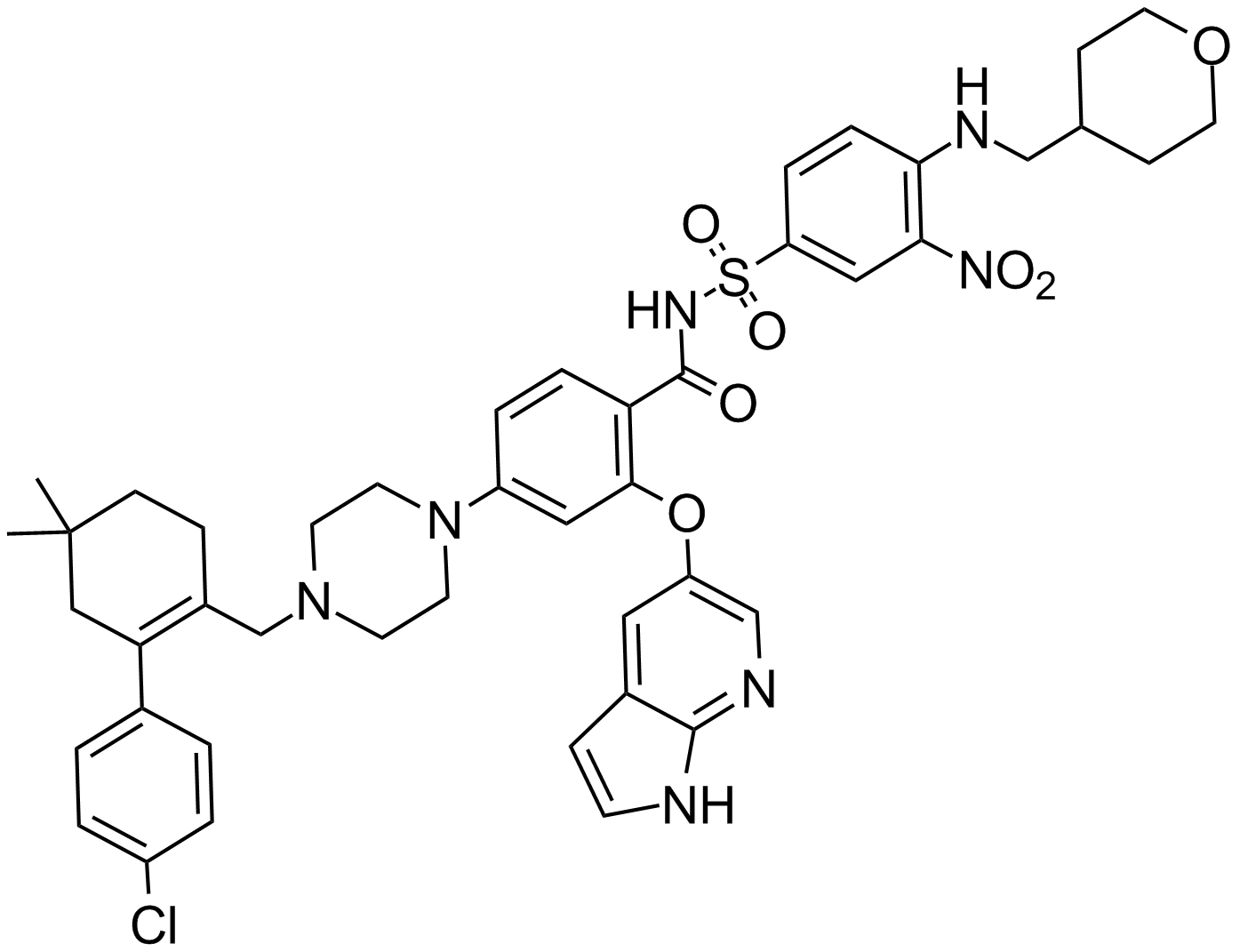
-
GC17234
ABT-737
ABT 737, ABT737
An inhibitor of anti-apoptotic Bcl-2 proteins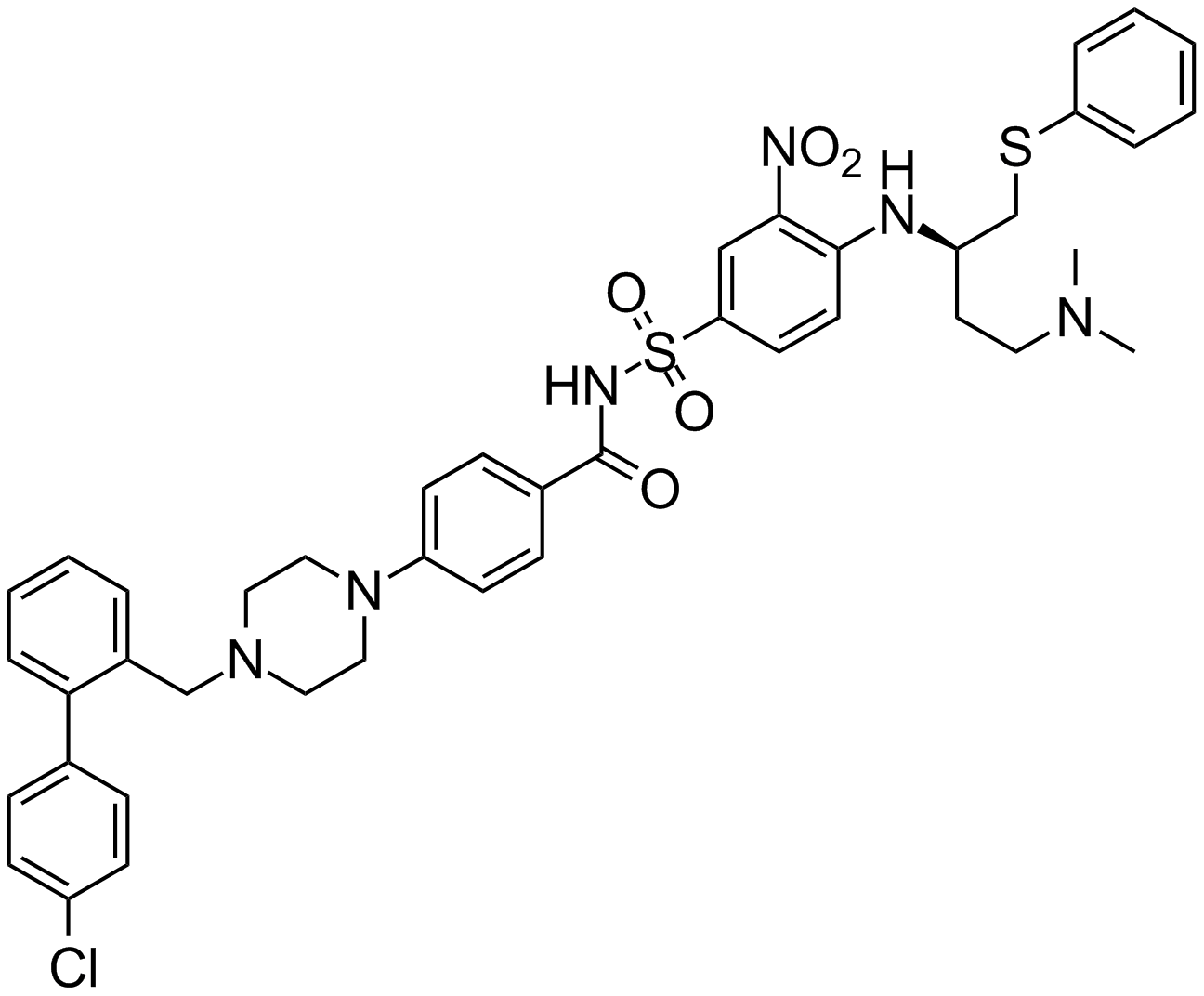
-
GC15875
ABT-751 (E7010)
ABT-751 (E7010)(E 7010) ist ein neuartiges bioverfÜgbares Tubulin-bindendes und antimitotisches Sulfonamid mit IC50-Werten von etwa 1,5 und 3,4 μM in Neuroblastom- bzw. Nicht-Neuroblastom-Zelllinien.
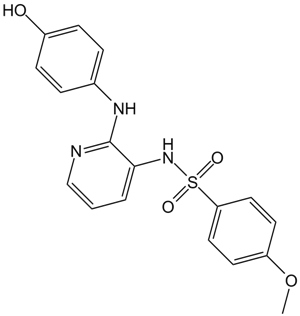
-
GC12422
ABT-888 (Veliparib)
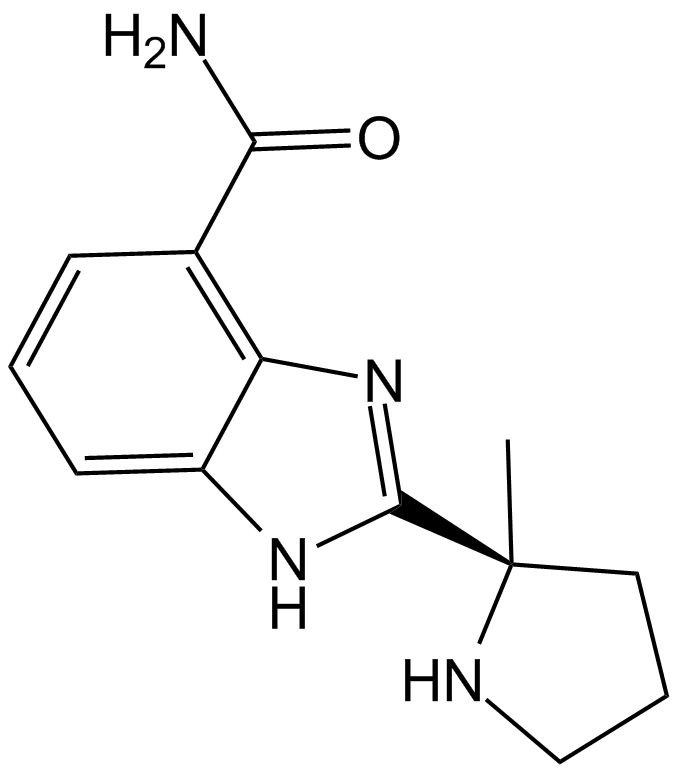
-
GC10871
AC 55649
AC 55649 ist ein potenter, hoch Isoform-selektiver Agonist des humanen RARβ2-Rezeptors mit einem pEC50 von 6,9.

-
GC35228
Aceglutamide
Aceglutamide, Acetylglutamine, N-acetyl Gln, NSC 186896
Aceglutamid (α-N-Acetyl-L-glutamin) ist ein Psychostimulans und Nootropikum, das zur Verbesserung des GedÄchtnisses und der Konzentration verwendet wird.
-
GC11567
Acetazolamide
L-579,486, NSC 145177
Acetazolamid ist ein Carboanhydrase (CA) IX-Hemmer mit einem IC50-Wert von 30 nM fÜr hCA IX.
-
GC14142
Acetylcholine Chloride
ACh
Acetylcholinchlorid (ACh-Chlorid), ein Neurotransmitter, ist ein starker cholinerger Agonist.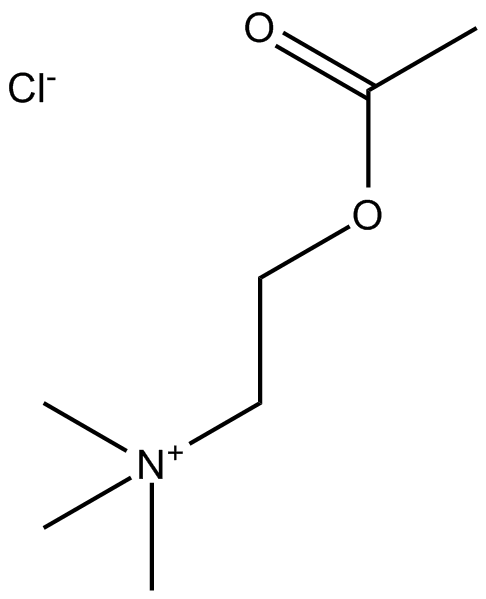
-
GC17094
Acitretin
all-trans Acitretin, Ro 10-1670, Ro 10-1670/000
Acitretin (Ro 10-1670) ist ein systemisches Retinoid der zweiten Generation, das zur Behandlung von Psoriasis eingesetzt wird.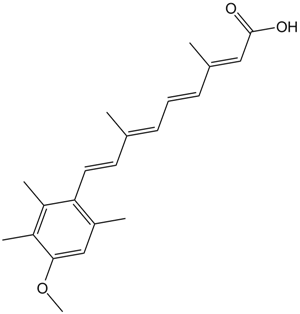
-
GC17113
Acitretin sodium
Acitretin (Ro 10-1670)-Natrium ist ein systemisches Retinoid der zweiten Generation, das zur Behandlung von Psoriasis eingesetzt wird.
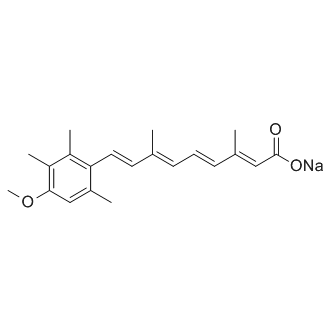
-
GC41242
Acridine Orange
NSC 194350
Acridinorange ist ein zellgÄngiger Fluoreszenzfarbstoff, der Organismen (Bakterien, Parasiten, Viren etc.)
-
GC35242
Actein
Aktein ist ein Triterpenglykosid, das aus den Rhizomen von Cimicifuga foetida isoliert wird. Actein unterdrÜckt die Zellproliferation, induziert Autophagie und Apoptose, indem es die ROS/JNK-Aktivierung fÖrdert und den AKT-Weg bei menschlichem Blasenkrebs abstumpft. Actein hat in vivo eine geringe ToxizitÄt.
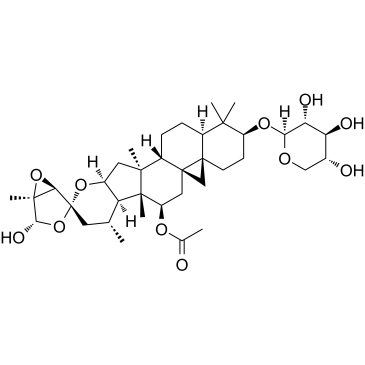
-
GC16866
Actinomycin D
Cosmegen, Dactinomycin, Meractinomycin, NCI C04682, NSC 3053, Oncostatin K
Ein DNA-interagierender Transkriptionsblocker mit antikarzinogener Aktivität.
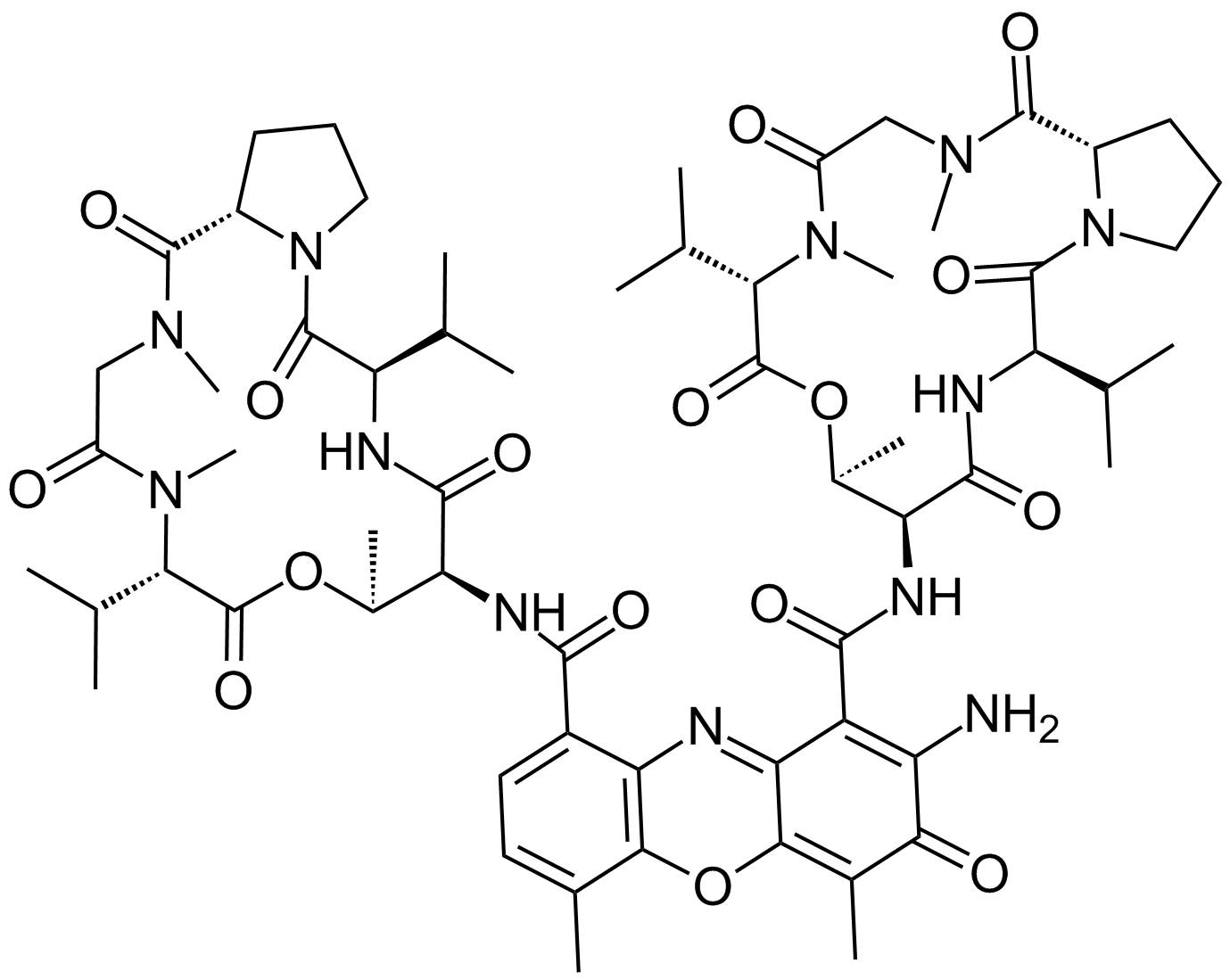
-
GC19019
Acumapimod
BCT-197
Acumapimod (BCT197) ist ein oral aktiver p38-MAP-Kinase-Inhibitor mit einem IC50-Wert von weniger als 1 μM fÜr p38α.
-
GC10610
Adapalene
CD 271
Adapalen (CD271), ein synthetisches Retinoid der dritten Generation, wird hÄufig fÜr die Erforschung von Akne verwendet.
-
GC14379
Adapalene sodium salt
Adapalen (CD271) Natriumsalz, ein synthetisches Retinoid der dritten Generation, wird hÄufig fÜr die Erforschung von Akne verwendet.

-
GC14106
Adenosine
NSC 7652
Nukleosid
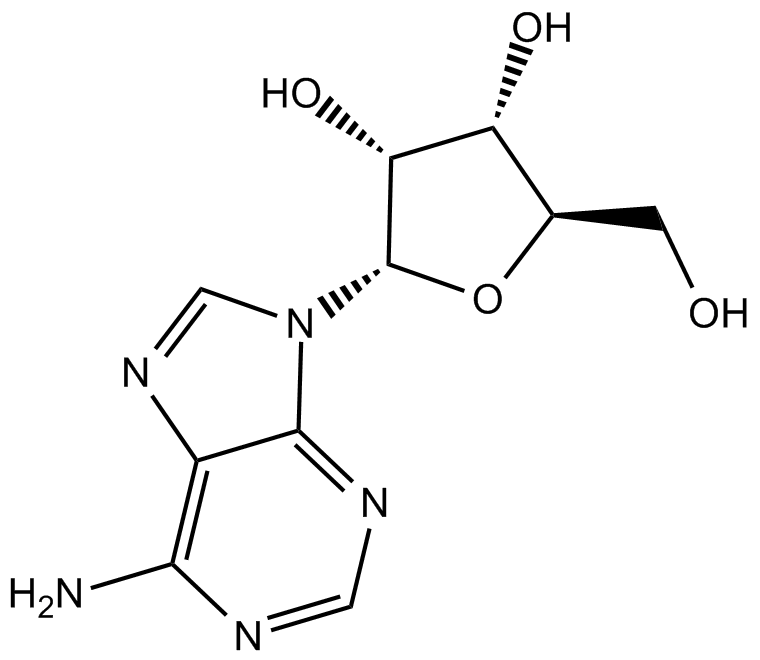
-
GC19729
Adenosine 5′-diphosphoribose sodium
ADP ribose sodium
Adenosin-5′-Diphosphoribose-Natrium (ADP-Ribose-Natrium) ist ein Nicotinamid-Adenin-Nukleotid (NAD+)-Metabolit.
-
GC10707
Afatinib dimaleate
Afatinib dimaleate, BIBW 2992, BIBW 2992MA2
An inhibitor of EGFR and ErbB2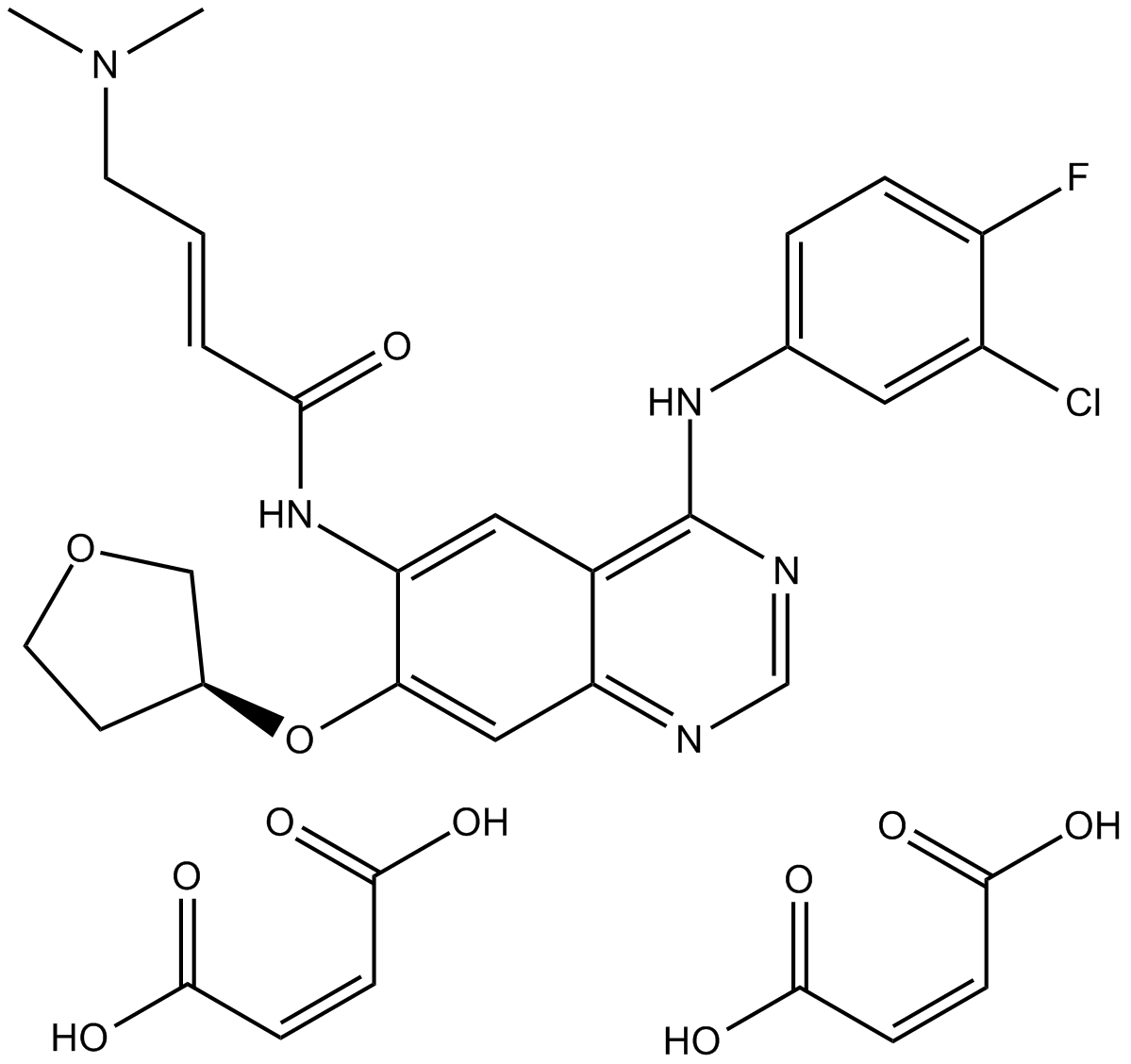
-
GC60567
Afatinib impurity 11
Afatinib-Verunreinigung 11 ist eine Verunreinigung von Afatinib. Afatinib ist ein irreversibler Inhibitor der EGFR-Familie mit IC50-Werten von 0,5 nM, 0,4 nM, 10 nM und 14 nM fÜr EGFRwt, EGFRL858R, EGFRL858R/T790M bzw. HER2.
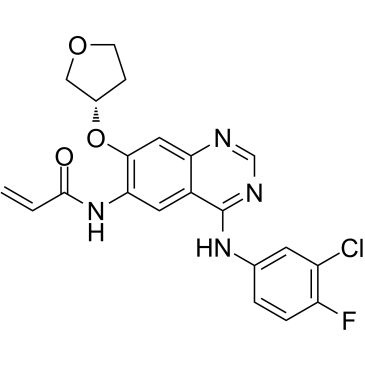
-
GC35262
Afzelin
Kaempferin, Kaempferol 3-O-rhamnoside, Kaempferol 3-O-α-L-rhamnopyranoside
Afzelin (Kaempferol-3-O-rhamnosid) ist ein Flavonolglykosid, das in Houttuynia cordata Thunberg vorkommt und weithin zur Herstellung von antibakteriellen und fiebersenkenden Mitteln, Entgiftungsmitteln und zur Behandlung von EntzÜndungen verwendet wird.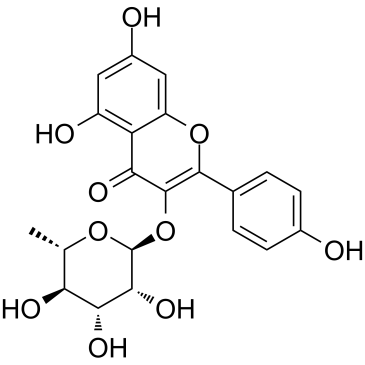
-
GC13697
AG-1024
AGS 200, Tyrphostin AG1024
AG-1024 (Tyrphostin AG 1024) ist ein reversibler, kompetitiver und selektiver IGF-1R-Inhibitor mit einem IC50 von 7 μM.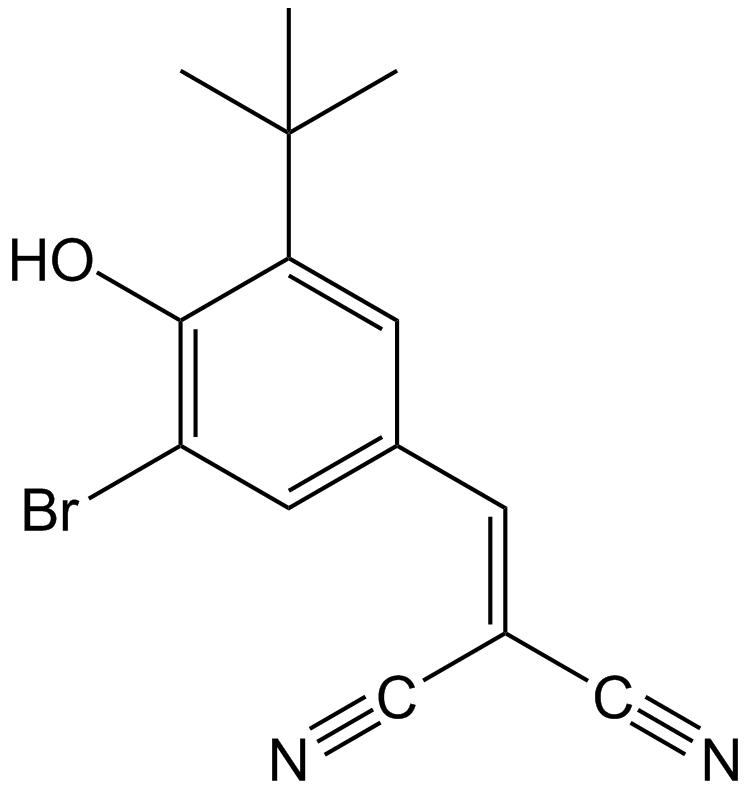
-
GC13854
AG-490 (Tyrphostin B42)
Tyrphostin AG-490
AG-490 (Tyrphostin B42) (Tyrphostin AG-490 (Tyrphostin B42)) ist ein Tyrosinkinase-Inhibitor, der EGFR, Stat-3 und JAK2/3 hemmt.

-
GC32817
AGN 193109
AGN 193109 ist ein Retinoidanalogon und wirkt als spezifischer und hochwirksamer Antagonist von RetinsÄurerezeptoren (RARs) mit Kds von 2 nM, 2 nM und 3 nM fÜr RARα, RARβ bzw. RARγ.
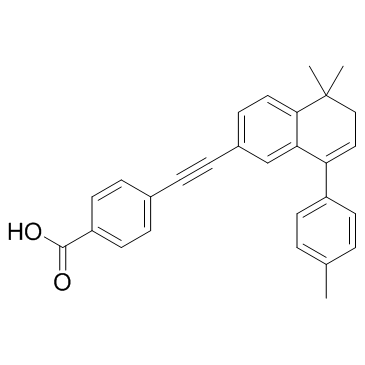
-
GC33315
AGN 194078
AGN 194078 ist ein selektiver RARα Agonist mit einem Kd und EC50 von 3 bzw. 112 nM.

-
GC12598
AGN 194310
VTP-194310
AGN 194310 (VTP-194310) ist ein hochaffiner, potenter und selektiver RetinsÄurerezeptoren (RARs)-Pan-Antagonist mit Kd-Werten von 3 nM, 2 nM, 5 nM fÜr RARα, RARβ bzw. RARγ.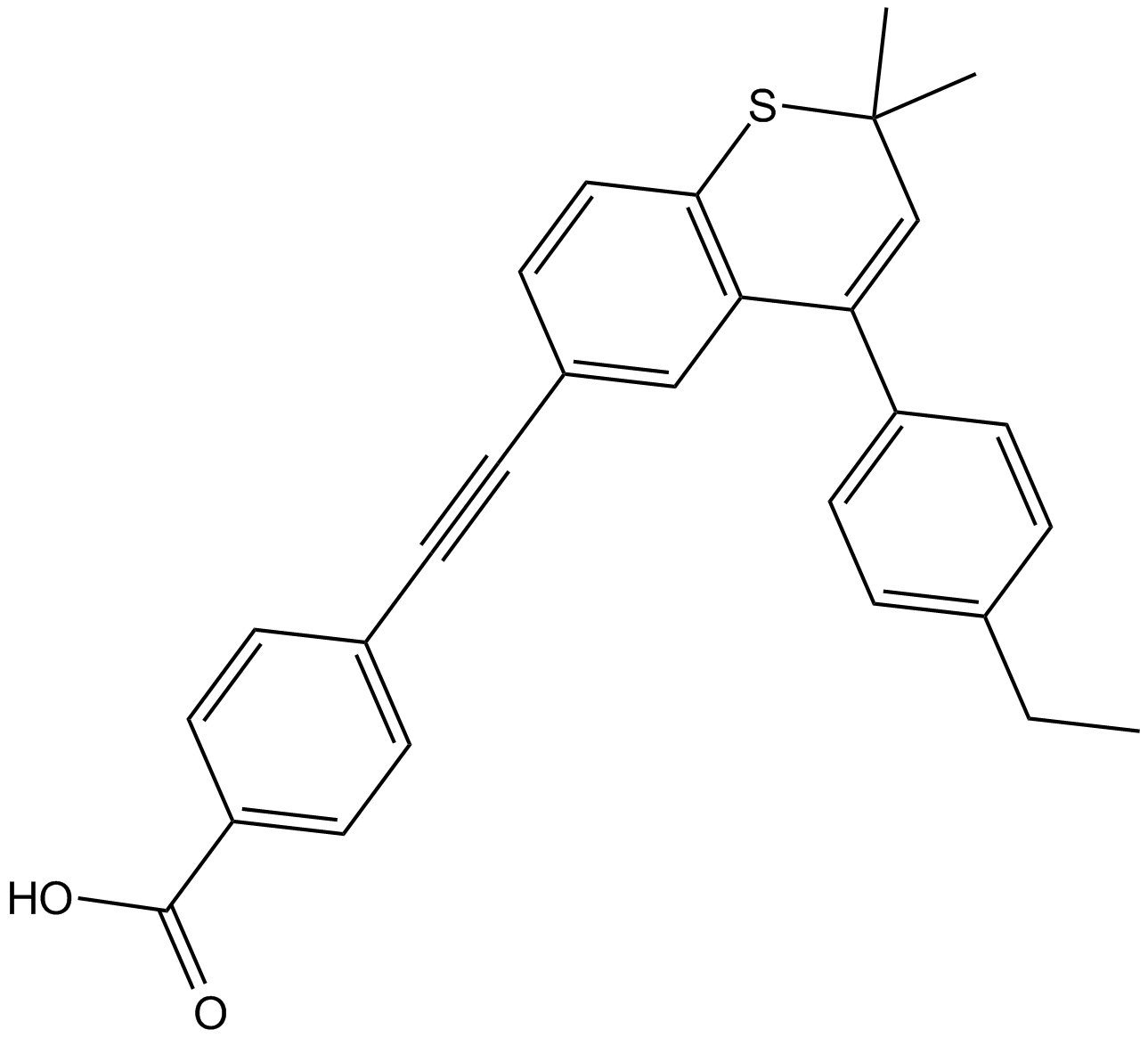
-
GC35265
AGN 195183
IRX-5183; VTP-195183; NRX-195183
AGN 195183 (IRX-5183) ist ein potenter und selektiver Agonist von RARα (Kd \u003d 3 nM) mit verbesserter Bindungsselektivität im Vergleich zu AGN 193836. AGN 195183 hat keine Aktivität auf RARβ/γ.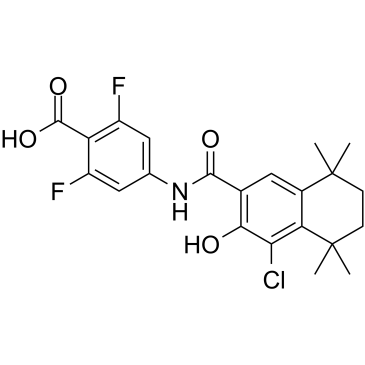
-
GC35266
AGN 196996
AGN 196996 ist ein potenter und selektiver RARα-Antagonist mit einem Ki-Wert von 2 nM; geringe BindungsaffinitÄt fÜr RARβ (Ki = 1087 nM) und RARγ (Ki = 8523 nM).
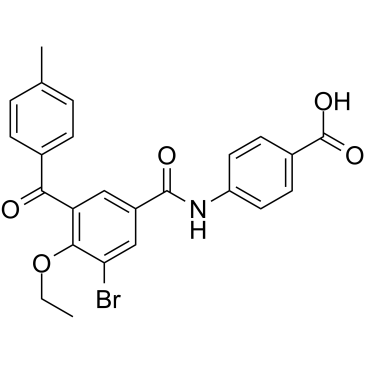
-
GC35267
AGN 205327
AGN 205327 ist ein potenter synthetischer RARs-Agonist mit EC50 von 3766/734/32 nM fÜr RARα/β/γ; keine Hemmung auf RXR.

-
GC35268
AGN 205728
AGN 205728 ist ein potenter und selektiver RARγ-Antagonist mit Ki/IC95-Werten von 3 nM/0,6 nM; keine Hemmung von RARα und RARβ.
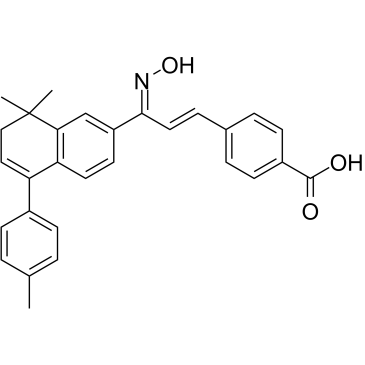
-
GC10518
AICAR
Acadesine, AICA-Riboside, NSC 105823
Ein Aktivator von AMPK

-
GC10580
AICAR phosphate
AICAR-Phosphat (Acadesine-Phosphat) ist ein Adenosin-Analogon und ein AMPK-Aktivator. AICAR-Phosphat reguliert den Glukose- und Lipidstoffwechsel und hemmt proinflammatorische Zytokine und die iNOS-Produktion. AICAR-Phosphat ist auch ein Autophagie-, YAP- und Mitophagie-Hemmer.

-
GC12646
AL 8697
AL 8697 ist ein spezifischer und oral wirksamer p38α-MAPK-Inhibitor mit einer IC50 von 6 nM.

-
GC15451
Aliskiren

-
GC13223
Aliskiren Hemifumarate
CGP 60536, SPP 100
Aliskiren (CGP 60536; CGP60536B; SPP 100) Hemifumarat ist ein oral aktiver und selektiver Renininhibitor mit einem IC50 von 1,5 nM.
-
GN10407
Alisol A

-
GC14749
ALLO-1
ALLO-1, ein Autophagierezeptor, ist fÜr die Autophagosomenbildung um vÄterliche Organellen essentiell und bindet Über sein LC3-interagierendes Region (LIR)-Motiv direkt an das LC3-Homolog des Wurms LGG-1.
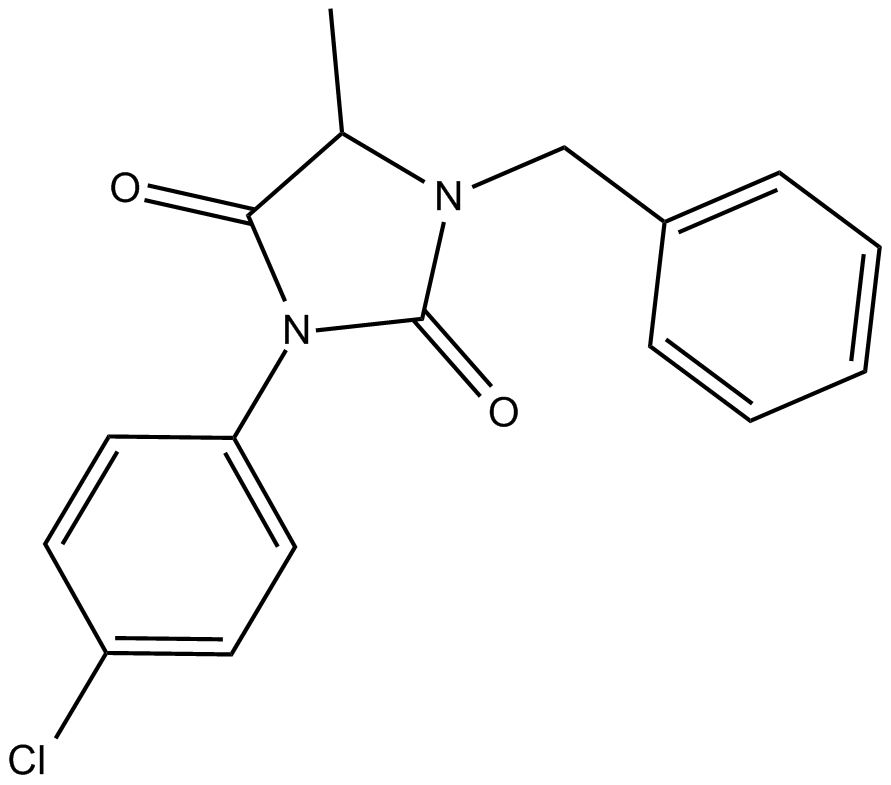
-
GN10516
Aloeemodin
3-Hydroxymethylchrysazine, NSC 38628, Rhabarberone

-
GC14314
Aloperine
Aloperin ist ein Alkaloid in Sophora-Pflanzen wie Sophora alopecuroides L, das krebshemmende, entzÜndungshemmende und antivirale Eigenschaften gezeigt hat.
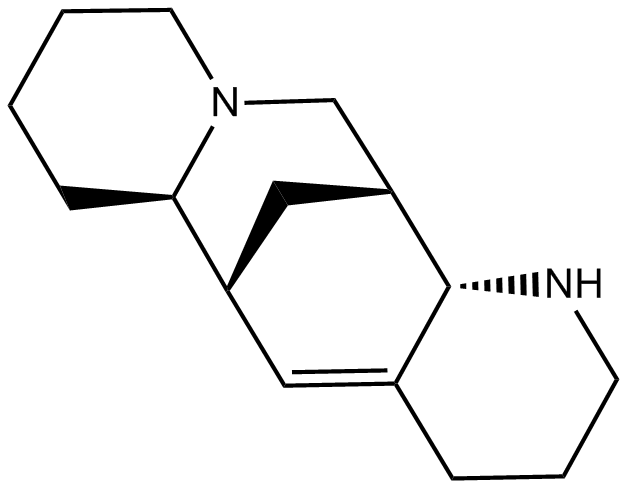
-
GC13664
AM580
CD336, NSC 608001, Ro 406055
AM580 ist ein selektiver RARα-Agonist mit IC50 und EC50 von 8 nM bzw. 0,36 nM.
-
GC72896
AMDE-1
AMDE-1 ist ein starker Autophagie-Induktor.

-
GC35322
Amiodarone
Amiodaron ist ein Antiarrhythmikum zur Hemmung des ATP-sensitiven Kaliumkanals mit einer IC50 von 19,1 μM.
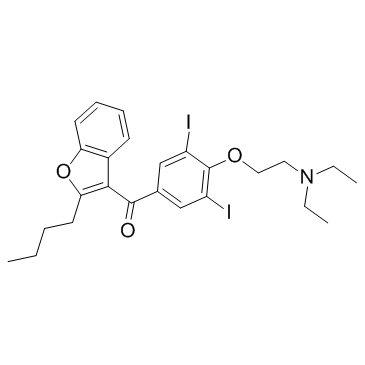
-
GC11432
Amiodarone HCl
Amiodaron-HCl, ein auf Benzofuran basierendes Antiarrhythmikum der Klasse III, hemmt WT nach außen gerichtete IhERG-SchwÄnze mit einem IC50 von ~45 nM.
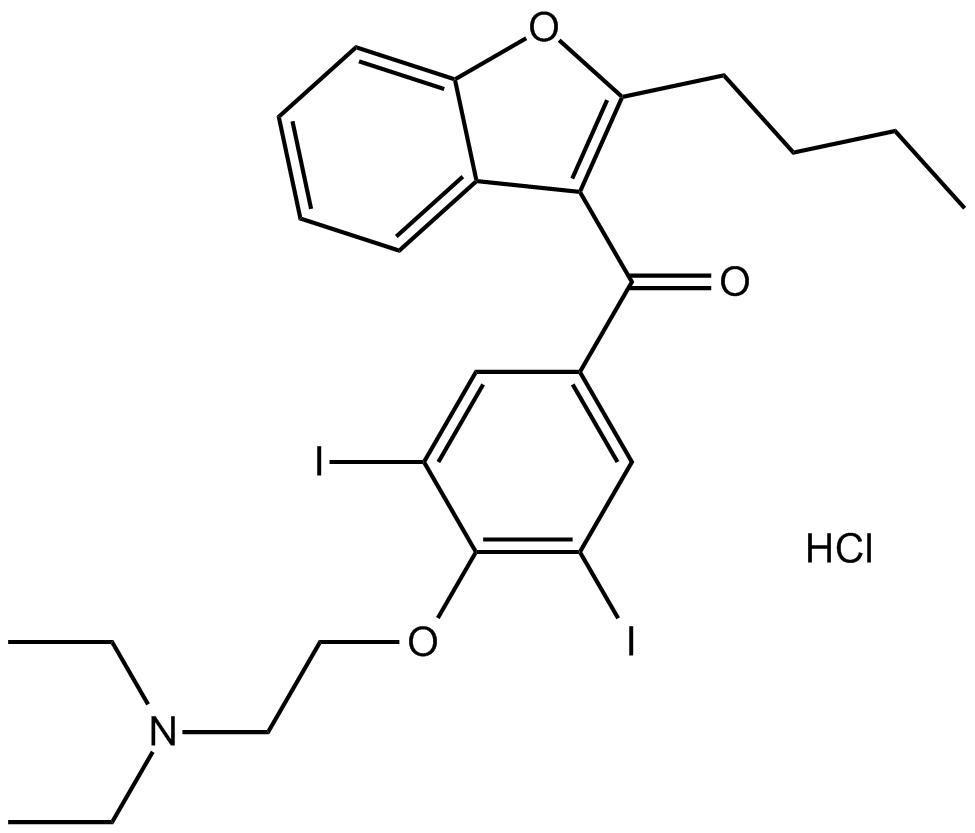
-
GC63316
Ammonium chloride
Ammoniumchlorid kann als heteropolare Verbindung mit pH-Wert-Regulierung eine intrazellulÄre Alkalisierung und metabolische Azidose verursachen, wodurch die enzymatische AktivitÄt beeinflusst und der Prozess des biologischen Systems beeinflusst wird. Ammoniumchlorid ist ein Autophagie-Hemmer.
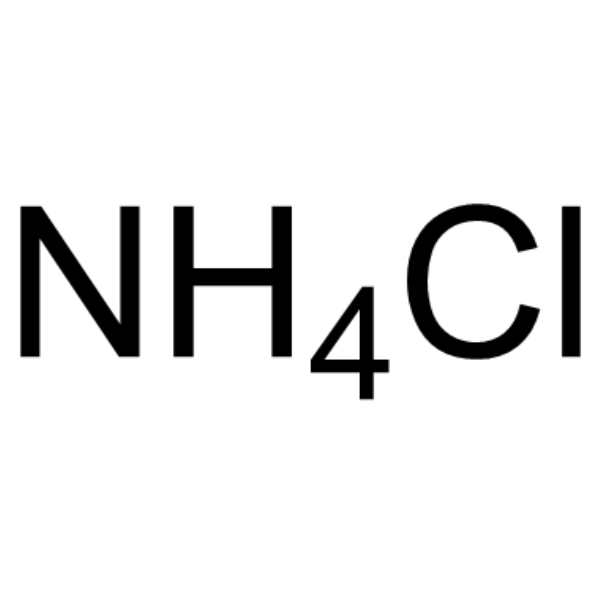
-
GC12326
Amsacrine
Amsacrin (m-AMSA; Acridinylanisidid) ist ein Inhibitor der Topoisomerase II und wirkt als antineoplastisches Mittel, das in die DNA von Tumorzellen interkalieren kann.
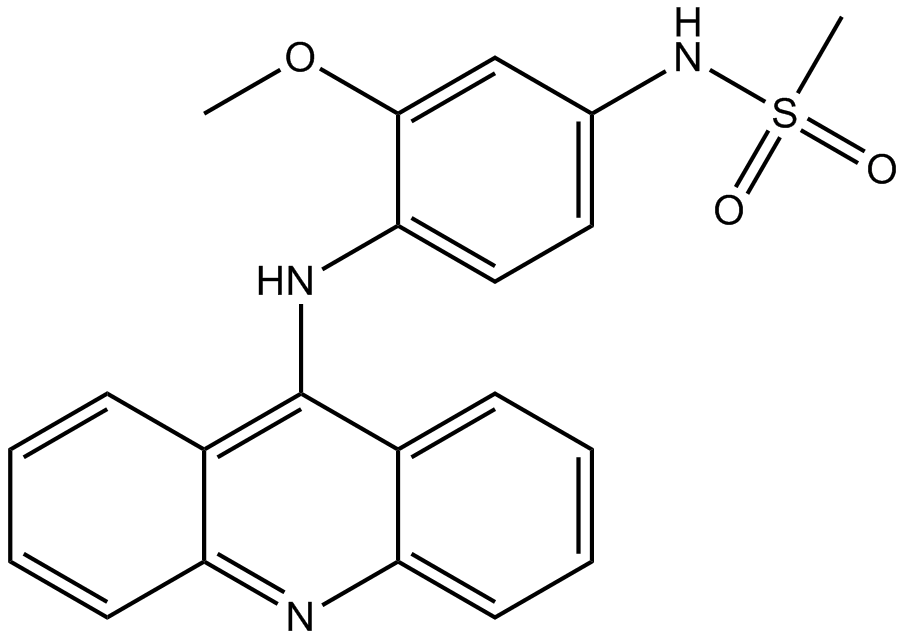
-
GC11747
Amsacrine hydrochloride
AMSA, m-AMSA, NSC 141549
Amsacrinhydrochlorid (m-AMSA-Hydrochlorid; Acridinylanisidid-Hydrochlorid) ist ein Inhibitor der Topoisomerase II und wirkt als antineoplastisches Mittel, das in die DNA von Tumorzellen interkalieren kann.
-
GN10718
Andrographolide

-
GC30842
Androsterone (5α-Androstan-3α-ol-17-one)
Androkinin, NSC 9898
An androgenic steroid
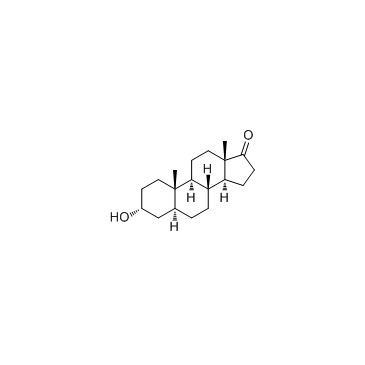
-
GC14292
Apatinib Mesylate
YN968D1
Apatinib Mesylate blockiert die nachgeschaltete Signaltransduktion des VEGF-Wegs, um die Neubildung von Blutgefäßen zu hemmen.
-
GN10150
Apigenin
Chamomile, Flavone, NSC 83244, Versulin
Apigenin ist ein kompetitiver CYP2C9-Inhibitor mit einem Ki von 2 μM.

-
GC16237
Apocynin
Acetoguaiacone, Acetovanillone, NSC 2146, NSC 209524
Apocynin ist ein selektiver NADPH-Oxidase-Hemmer mit einem IC50 von 10 μM.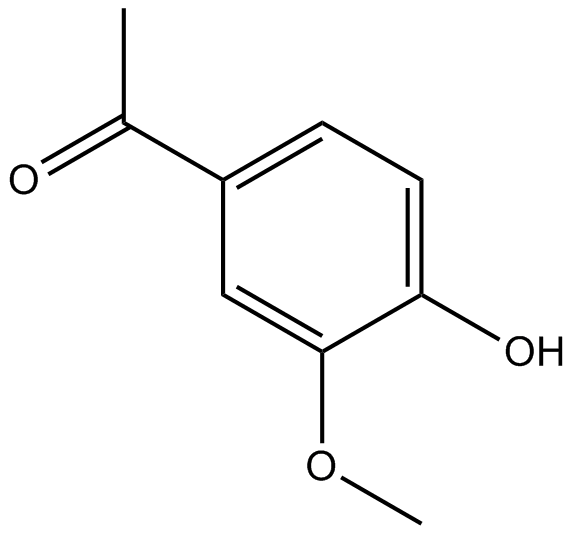
-
GC65004
Apostatin-1
Apt-1
Apostatin-1 (Apt-1) ist ein potenter TRADD-Hemmer.



